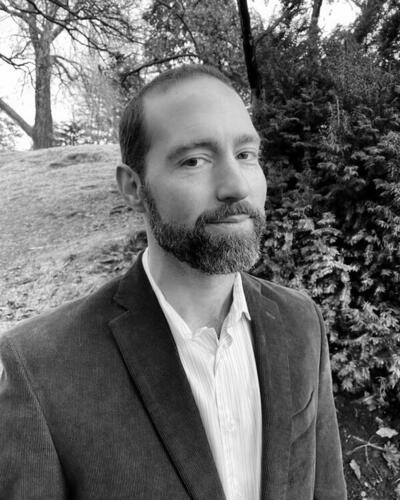About the project
Human Futures: A study of Technoscientific Immortality examines changing conceptions of the human being, mortality and social relations in an increasingly technologically advanced world.
Main content
Main objectives
The primary objective of this research project is to understand the socio-cultural foundations for, and effects of, the increasingly significant field of technoscientific immortality. On a more general level it is the relation between perceptions of the human being and perceptions of social relations we want to understand. How does changes in what we understand a human being to be also impact the way we understand social relations?
The second objective will be to provide a new empirical ground for developing theories on how we form and value social relations in a context of an increasing significance of technoscientific immortality. In short, we propose with this research to develop comparative analysis of ethnographic case studies of immortality practices in Russia and the US.
The third objective of this study is, lastly, to develop an historically based analysis of how ideas on immortality have spread and developed in particular socio-cultural contexts, and a comparative analysis of US and Russian immortality projects.
Project background
Technological innovation in human-computer interfaces, medical breakthroughs in nano- and biotechnology, algorithmic governance, new technologies to intervene in anthropogenic climate change, all seriously challenge established understandings of the human being and its environment. Mind-blowing questions are now being asked, such as: What is the nature of the future human being? What are the potentials of new genetics? Of cloning? Can AI develop human qualities? What happens to social relations when we are primarily living in digital, virtual spaces? What social status do robots, avatars and digital selves acquire?
The research project "Human Futures: A study of Technoscientific Immortality" examines one key aspect of the future human that might change the core of what it means to be in the world, and to be part of social relations, namely death. Through six different ethnographic case studies the project will develop comparative analysis of imaginaries and practices of technoscientific immortality practices in Russia and the US.
There are growing social movements working to push the boundaries of what a human being is and can do. Anti-aging groups work to achieve life extension and funding for medical research that can (it is hoped) reverse the process of aging. A growing number of new companies, particularly in the US, offer digital resurrection services creating simulations of deceased family members. Furthermore, there is an observable growing interest in what might be dubbed ‘immortality movements’, such as the transhumanistorganisation ‘Humanity+’. In short, transhumanism can be described as a philosophy, but also a political and social movement, in which the ultimate goal is to transcend the natural human form through technology.
Due to particular historical contingencies rooted both in the histories of the late nineteenth-century religious modernism and experimentation, and the Cold War technoscientific imaginaries and science-based competition between the Soviet Union and the United States, these movements are mainly present in the US (Farman 2020, Eriksen 2021) and in Russia (Bernstein 2019) but are increasingly vocal in European cities like Paris and London as well. In choosing The US and Russia as primary sites for comparative study, we pay attention not only to parallelisms in development (see, for example, Buck-Morss 2000 for the comparative study on “mass utopias” in the United States and the Soviet Union), but to transnational connections and interactions between key actors in the immortality field throughout the twentieth century and today that we will track through archival research and ethnographic fieldwork. Our intention with this research project is to address a key aspect of this immortality movement: what is this movement an expression of and what are the effects?
Cited on this page
Ahmad, M. A. (2016, May). After death: big data and the promise of resurrection by proxy. In Proceedings of the 2016 CHI
Conference Extended Abstracts on Human Factors in Computing Systems (pp. 397-408).
Bernstein, A. (2019) The Future of Immortality: Remaking Life and Death in Contemporary Russia. Princeton: Prince University
Press.
Chrulew, M. (2017). 14 Freezing the Ark: The Cryopolitics of Endangered Species Preservation. In Cryopolitics: frozen life in a
melting world, 283., ed. Joanna Radin and Emma Kowal. Cambridge, MA: MIT Press.
Buck-Morss, S. (2002). Dreamworld and Catastrophe. The Passing of Mass Utopia in East and West. Cambridge, MA: MIT Press.
Farman, A. 2012. “Secular Immortal.” Doctoral Dissertation, City University of New York.
Meese, J., Nansen, B., Kohn, T., Arnold, M., & Gibbs, M. (2015). Posthumous personhood and the affordances of digital media.
Mortality, 20(4), 408-420.
More, M (2013). “The Philosophy of Transhumanism.” In The Transhumanist Reader, edited by Max More and Natasha Vita-More, 3-17. Chichester, UK: Wiley-Blackwell.
Rabinow, P. (1999). Artificiality and Enlightenment: From Sociobiology to Biosociality. In Essays on the Anthropology of Reason
Pp. 91–111. Princeton: Princeton University Press.
Romain, T. (2010). “Extreme Life Extension: Investing in Cryonics for the Long, Long Term.” Medical Anthropology 29 (2):194-215.
Twilley, N. (2016). Can Hypothermia Save Gunshot Victims? The New Yorker. November 28.
http://www.newyorker.com/magazine/2016/11/28/can-hypothermia-save-gunsho..., accessed April 2, 2017.
Vidal, F. (2002). Brains, Bodies, Selves: Anthropology of Identity and the Resurrection of the Body. Critical Inquiry 28(4): 930–974.
Vidal, F. (2009). Brainhood, Anthropological Figure of Modernity, History of the Human Sciences 22(1):5-36.
Young, Simon. 2006. Designer Evolution: A Transhumanist Manifesto. Amherst: Prometheus Books.




